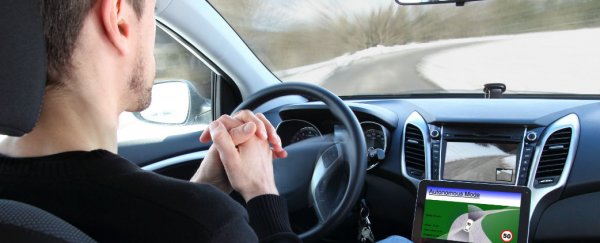Since California began issuing permits for self-driving cars in September, four of the 48 on the road have been in accidents. Two of the accidents reportedly happened while the vehicles were in self-driving mode, and human drivers are being blamed for the others.
While the crashes weren't serious, caused no injuries, and occurred when the cars were travelling at less than 16 km/hour, researchers are keen on figuring out exactly what happened to ensure that the technology is even safer than it already is.
One of the cars was an Audi owned by Delphi Automotive, and the other three were Lexus SUVs - part of Google's intensive self-driving tests near the company's Mountain View headquarters.
According to Chris Welch at The Verge, Google operates 23 Lexus vehicles fitted with its autonomous driving sensors. Of these, there have been 11 accidents, mainly as a result of other cars hitting them. "Not once was the self-driving car the cause of the accident," wrote the director of Google's self-driving car project, Chris Urmson, in a blog post. Urmson says in extensive testing their self-driving fleet had only had "a handful of minor fender-benders, light damage, no injuries, so far caused by human error and inattention."
Driverless cars are fitted with security features such as a 'kill switch' which immediately turns off the car's self-driving system. "Delphi's self-driving Audi was "moderately damaged" after it was suddenly broadsided by another vehicle while waiting to turn left at a light," writes Welch at The Verge. "It was not in self-driving mode at the time."
Since Google began testing autonomous driving one year ago, they've clocked up some 1.7 million miles - the equivalent of 15 years of typical human driving. In that time, they've had a total of six crashes between them, most of which occurred when they were rear-ended by other drivers, an Audi representative told The Verge.
"Those accidents aren't totally a loss either," writes Dan Moren for Australian Popular Science."The information gleaned from those scenarios helps Google improve the algorithms of the autonomous car, helping build patterns of driving that allow it to anticipate when an accident might occur."
One such example is the way a Google car hesitates when a light turns green - one of the most common times for accidents.
Driverless cars use a variety of sensors to produce a detailed picture of their surroundings. One of these is a laser that bounces pulses of light off the surrounding objects and measures how long they take to return. This data is combined with video and radar sensor information picked up by the car, and is processed by a self-learning, on-board computer, which decides when to steer, break, and accelerate.
The technology has been gradually making its way onto public roads in the US since late last year, with the Obama administration working to make them a reality sooner rather than later. One of the first to cruise around San Francisco was a very swish driverless Mercedes equipped with two sets of couches facing each other, it's been billed as a "virtual living room".
While most experts - including US lawmakers - believe transitioning to driverless cars will take a few decades, Zach Kanter at Quartz predicts that they will have a near-monopoly by 2030. And they're set to change everything. "They will cause unprecedented job loss and a fundamental restructuring of our economy, solve large portions of our environmental problems, prevent tens of thousands of deaths per year, save millions of hours with increased productivity, and create entire new industries that we cannot even imagine from our current vantage point," he says.
This idea is based on a 2013 study from Columbia University in the US, in which researchers found that a fleet of 9,000 autonomous cars could replace all the taxi cabs in New York City, slashing both waiting times and costs for customers.
Whether we're ready for it or not, it seems the technology for driverless cars is en route. And luckily, the people responsible for making them are figuring out how to save them from our own bad driving.

